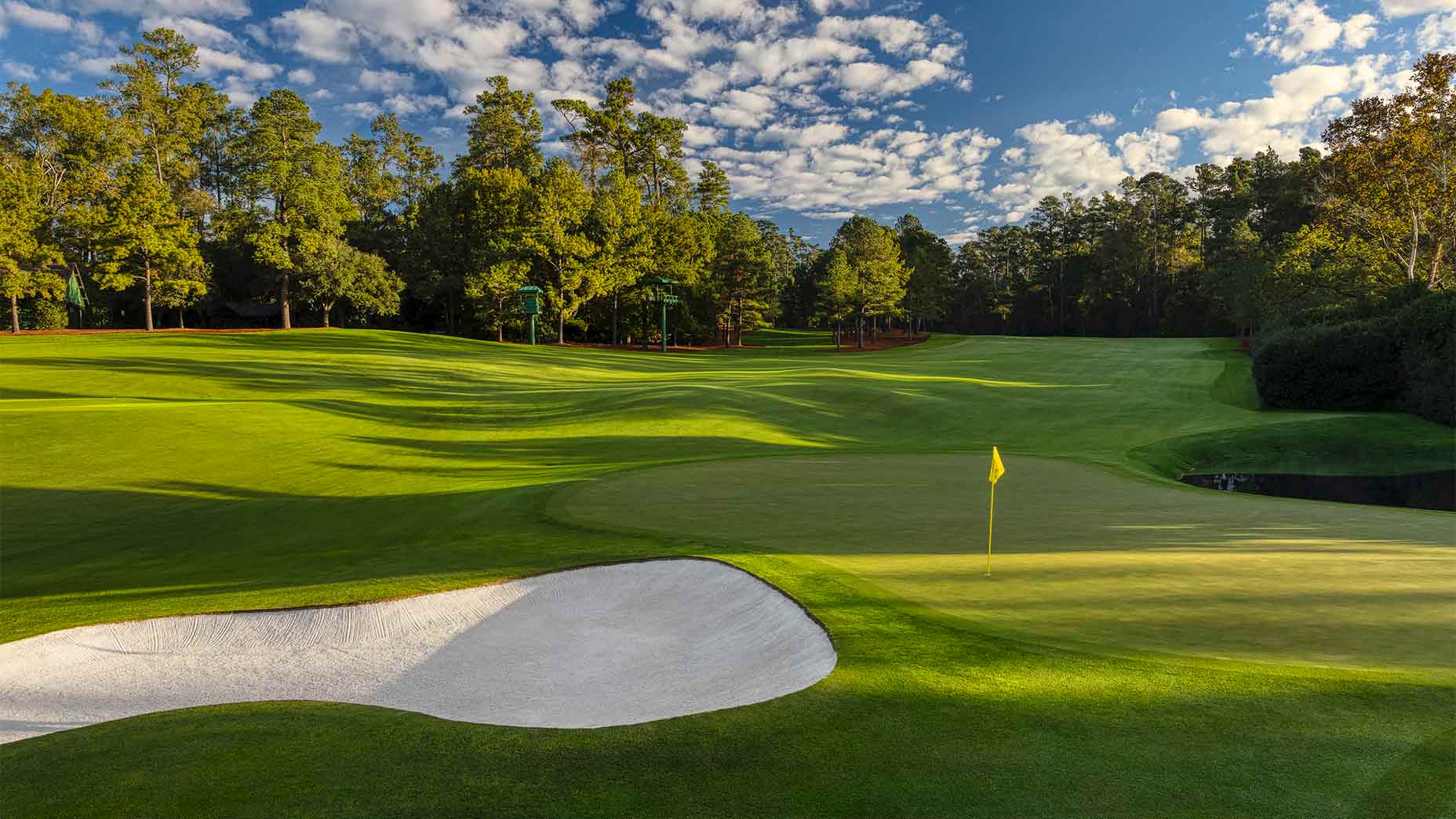There’s history everywhere at Augusta National Golf Club, home of the Masters. Here’s a quick nugget you might not have known about every hole.
Hole No. 1: Par-4 / 445 yards (Tea Olive): In 1968, Roberto De Vicenzo eagled hole No. 1, only to lose the Masters in a heartbreaker later that day. It was his birthday.
Hole No. 2: Par-5 / 575 yards (Pink Dogwood): In the final round of the 2012 Masters, Louis Oosthuizen made a double eagle at No. 2. After his 253-yard approach shot landed on the green, it took 16 seconds to find the bottom of the cup.
Hole No. 3: Par-4 / 350 yards (Flowering Peach): In 2020, No. 3, ANGC’s shortest par 4, yielded no eagles, 65 birdies, 183 pars, 48 bogeys, 5 doubles and a lost ball by Bryson DeChambeau.
Hole No. 4: Par-3 / 240 yards (Flowering Crab Apple): On No. 4 at the ’20 Masters, Jon Rahm made his fourth career ace during a practice round but didn’t know it until he reached the green.
Hole No. 5: Par-4 / 495 yards (Magnolia): The 5th is modeled after St. Andrews’ Road Hole.
Hole No. 6: Par-3 / 180 yards (Juniper): The first player to ace No. 6 in final-round Masters competition was an amateur (and lumber salesman) named Billy Joe Patton, in 1954.
Hole No. 7: Par-4 / 450 yards (Pampas): In 1938, ANGC cofounders Clifford Roberts and Bobby Jones were persuaded to lengthen No. 7 — from 340 yards to 365 yards — by 1934 and ’36 Masters champ Horton Smith.
Hole No. 8: Par-5 / 570 yards (Yellow Jasmine): There has been only one double eagle posted on the 8th. Bruce Devlin did it in 1967, in round one. (He finished T-10.)
Hole No. 9: Par-4 / 460 yards (Carolina Cherry): Still visible to the right of the green on No. 9 is “Roberts Plateau,” a landing area for short hitters.
Hole No. 10: Par-4 / 495 yards (Camellia): When Bob Jones teed off at No. 10, March 22, 1934, he had an impressively large gallery of 1,000 people.
Hole No. 11: Par-4 / 505 yards (White Dogwood): Nick Faldo won two of his three green jackets in sudden-death playoffs on 11, besting Scott Hoch in ’89 and Ray Floyd in ’90.
Hole No. 12: Par-3 / 155 yards (Golden Bell): Though only 155 yards in length, No. 12 is ranked ANGC’s fourth most difficult hole since 1942.
Hole No. 13: Par-5 / 510 yards (Azalea): Clifford Roberts once drove his cart into a fairway creek on 13. It was quickly filled in.
Hole No. 14: Par-4 / 440 yards (Chinese Fir): A fairway bunker was removed from No. 14 in 1952, making it the only hole at Augusta National without a bunker.
Hole No. 15: Par-5 / 530 yards (Firethorn): In ’57, Ben Hogan suggested the greenside bunker be added to 15.
Hole No. 16: Par-3 / 170 yards (Redbud): The original teeing area for 16 was to the right of the 15th green. It was moved to its current location in ’46.
Hole No. 17: Par-4 / 440 yards (Nandina): Only four players have back-to-back birdies on 17 and 18 to win the Masters. Last to do it: Charl Schwartzel, in 2011.
Hole No. 18: Par-4 / 465 yards (Holly): In 1958, Doug Ford dunked his 72nd-hole bunker shot to win the Masters by three.
